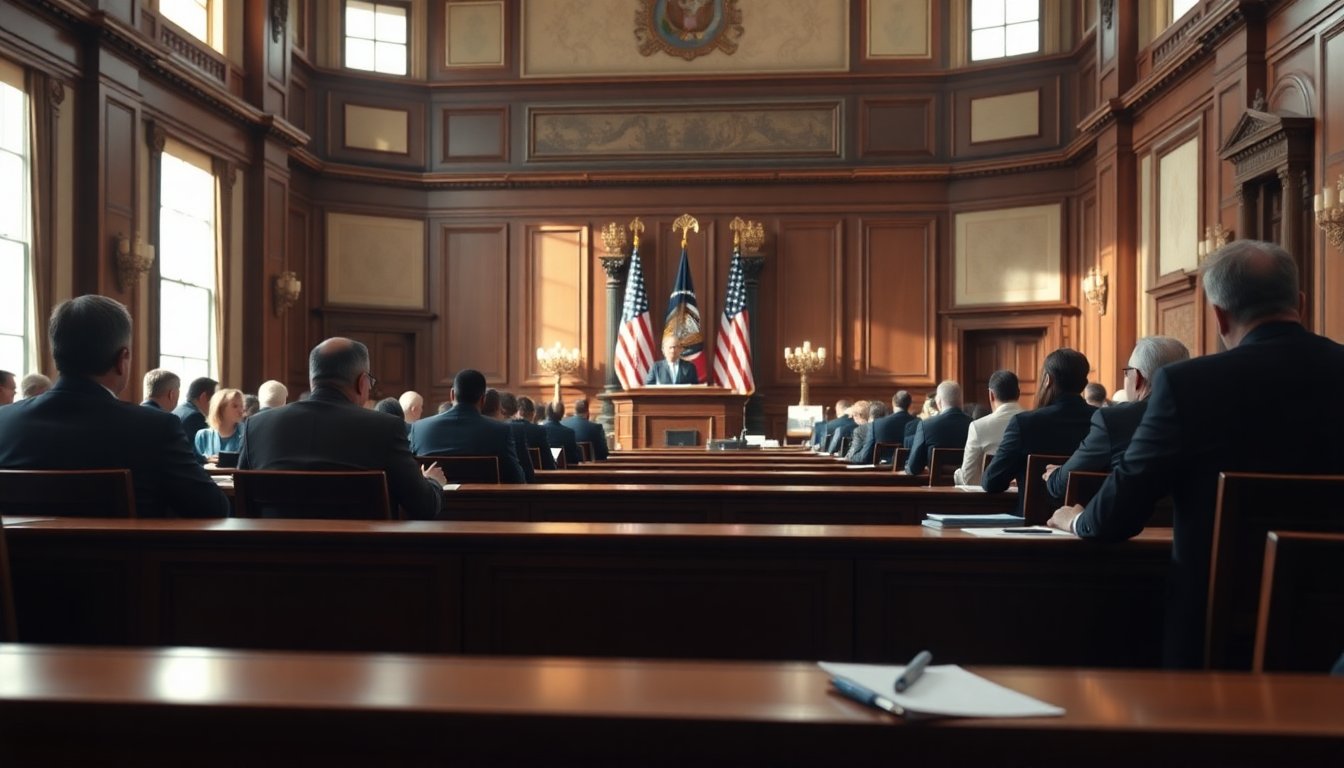Table of Contents
In a historic moment for American politics, Congress officially recognized the victory of Donald J. Trump during a session that was notably free of tension or interruptions. This event starkly contrasts with the tumultuous certification process that took place four years ago, signaling a significant shift in the political landscape.
The swift proceedings, overseen by Vice President Kamala Harris, marked a critical juncture in the democratic process. As the nation faces various challenges, this moment provided a glimpse of stability within the governmental framework, underscoring the importance of the electoral certification process.
The Significance of the Certification Process
The certification of election results is a fundamental element of the American democratic system. This process ensures that the will of the voters is acknowledged and legitimized within the framework of government. The recent session, characterized by its calm demeanor, illustrated a commitment to upholding the integrity of this process.
Understanding the Role of Congress
Congress plays a pivotal role in the electoral process, as outlined in the U.S. Constitution. Following the election, results are sent to Congress for certification, where they are formally acknowledged. This step is crucial, reinforcing the democratic principle that the voice of the electorate must be respected and validated.
During the session, Vice President Harris’s announcement of Trump’s victory was met with little fanfare, contrasting sharply with the heated debates and protests that marred the previous certification process. This stark difference emphasizes a return to a more procedural and less contentious approach to governance.
Comparing Past and Present Certification Processes
The atmosphere surrounding the certification of electoral results can fluctuate significantly from one election cycle to another. In 2021, the certification was marked by unprecedented chaos, with protests and significant disruption as some lawmakers challenged the results. This created a highly charged environment that threatened the foundation of democratic norms.
In contrast, the recent certification of Trump’s victory was conducted with a sense of normalcy. Lawmakers engaged in their duties without the distractions that had previously overshadowed the process. This shift not only reflects changes in political dynamics but also highlights the resilience of American democratic institutions.
Implications for Future Elections
The smooth certification process raises questions about the future of electoral integrity and the potential for renewed focus on procedures that ensure transparency and respect for the democratic process. As the nation moves forward, it is essential to consider how these events shape public trust in elections and governmental institutions.
The relative calm of the recent certification session may serve as a model for future elections, reinforcing the idea that democracy can function effectively even amid challenges. By prioritizing the sanctity of the electoral process, lawmakers signal their commitment to uphold the principles that govern American democracy.
Conclusion
As Congress officially recognized Trump’s victory, the absence of drama and conflict offered a refreshing perspective on the electoral process. This moment serves as a reminder that the certification of election results is not merely a procedural formality, but a vital component of maintaining democratic integrity.
The swift proceedings, overseen by Vice President Kamala Harris, marked a critical juncture in the democratic process. As the nation faces various challenges, this moment provided a glimpse of stability within the governmental framework, underscoring the importance of the electoral certification process.0


